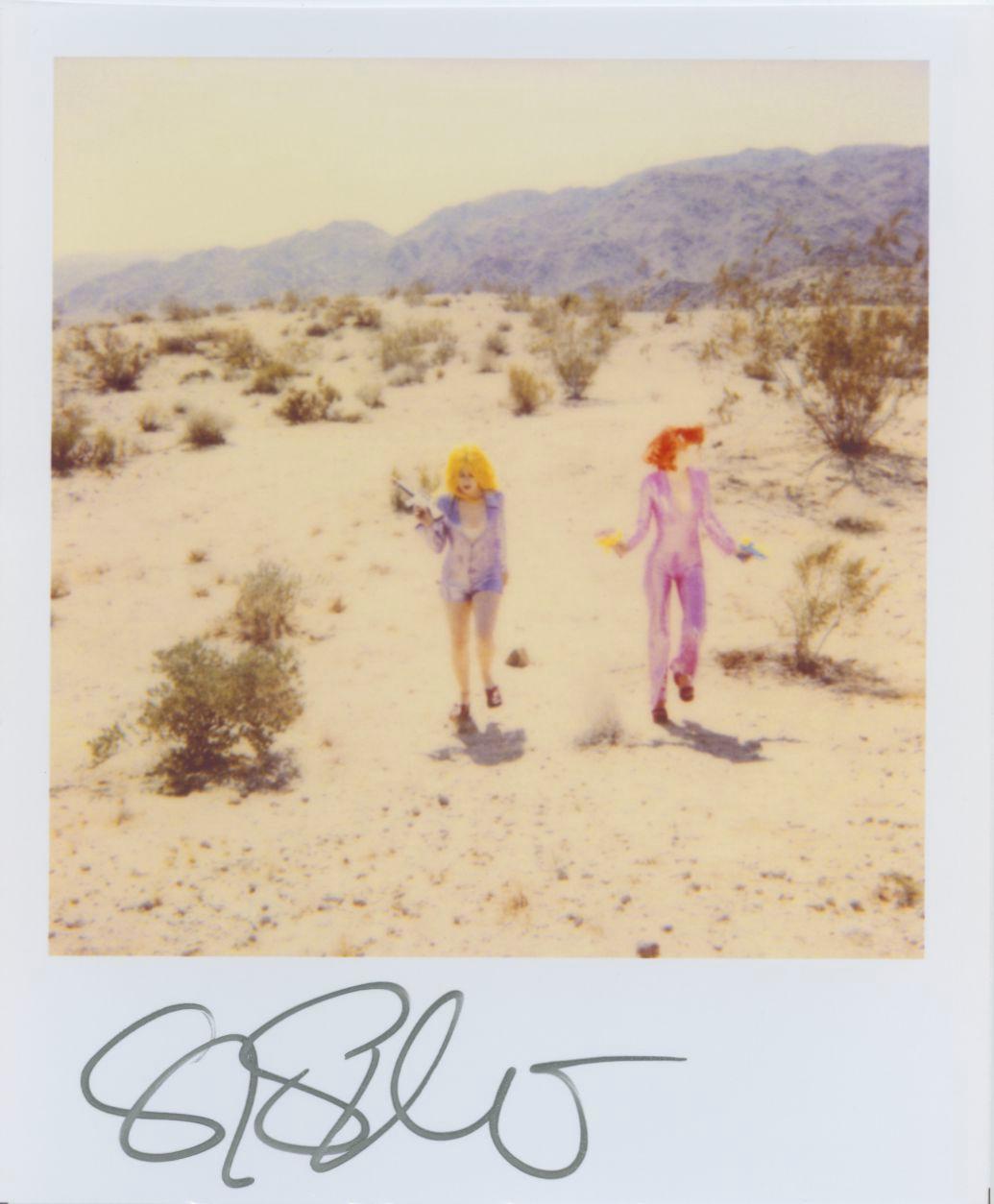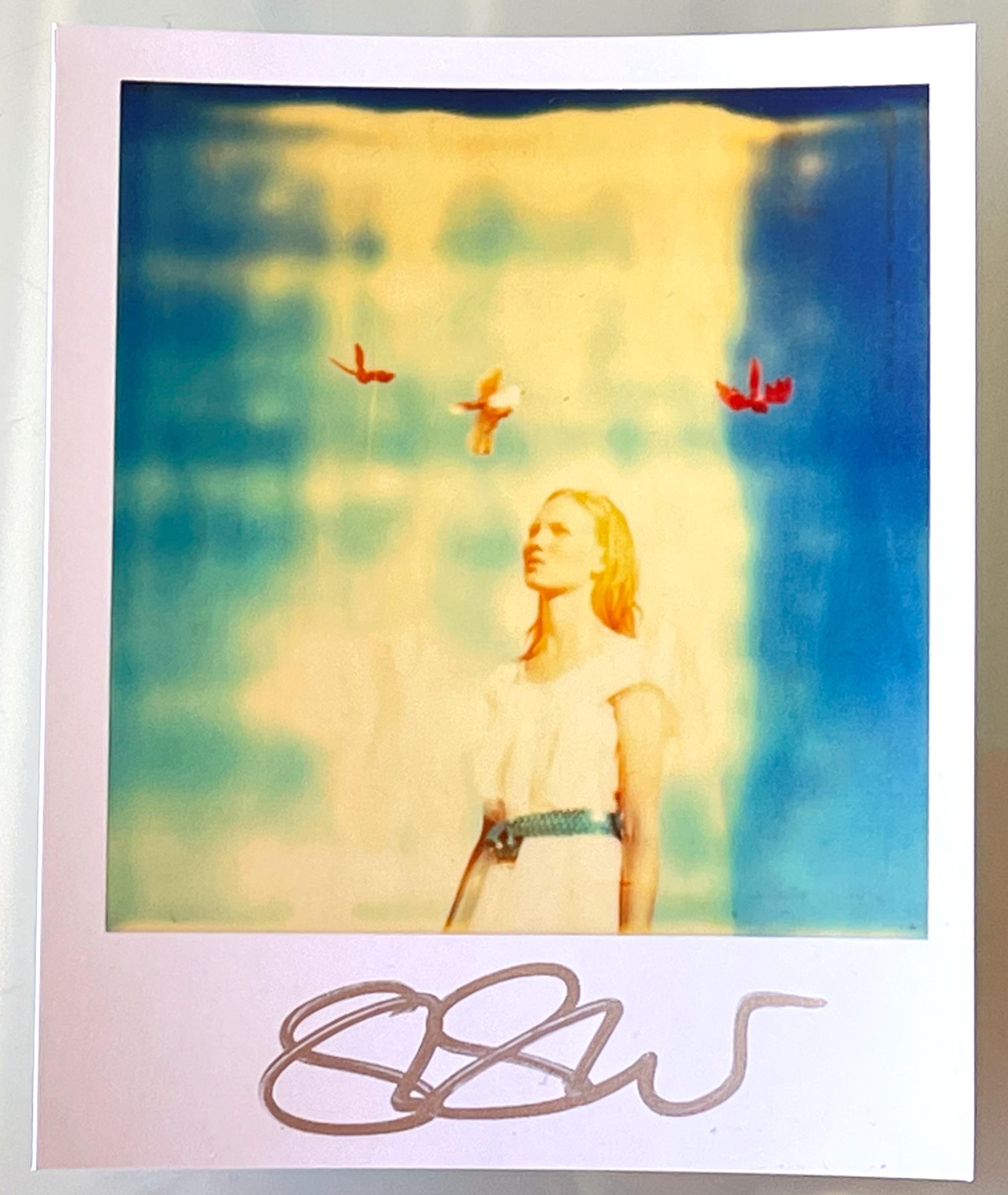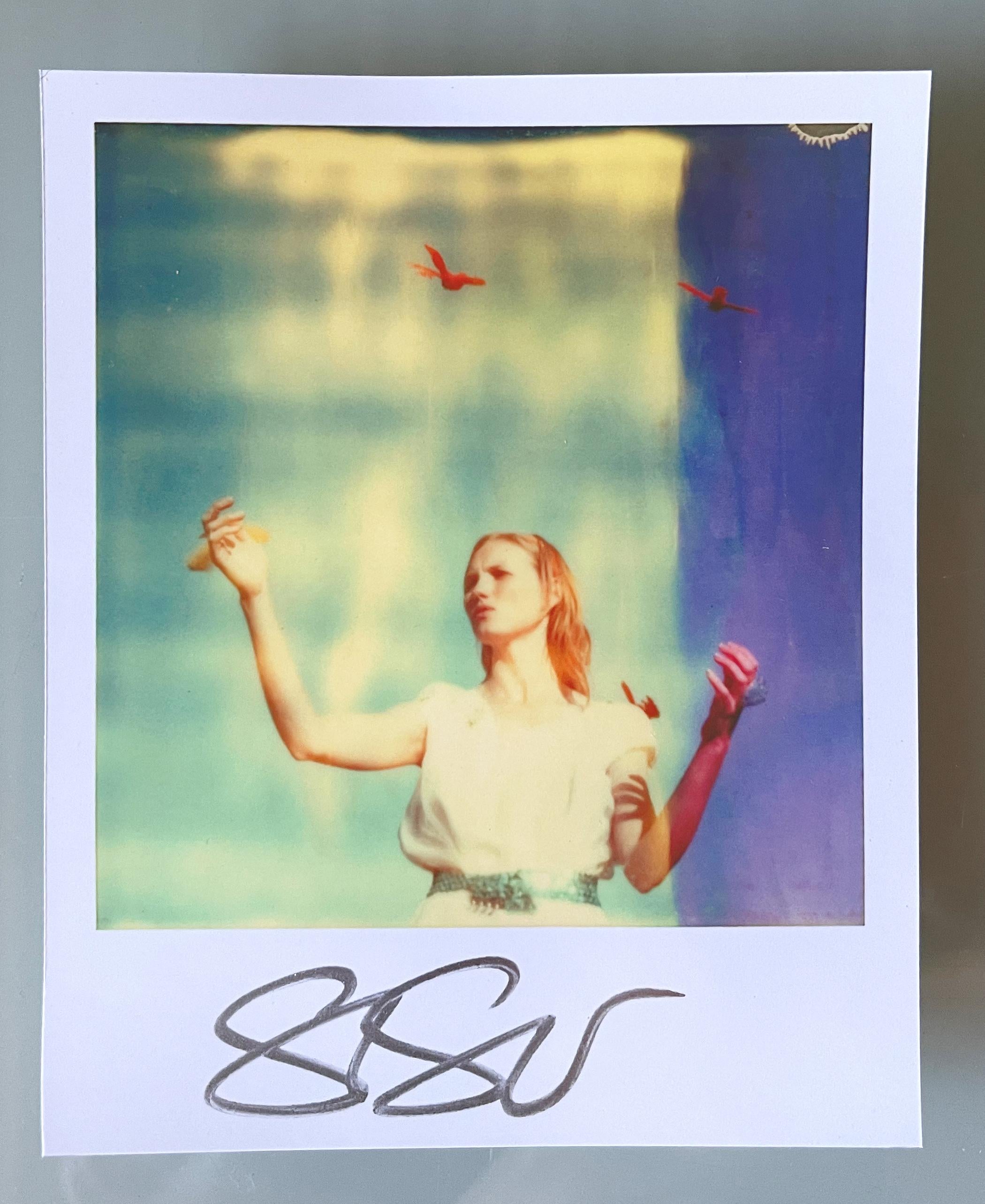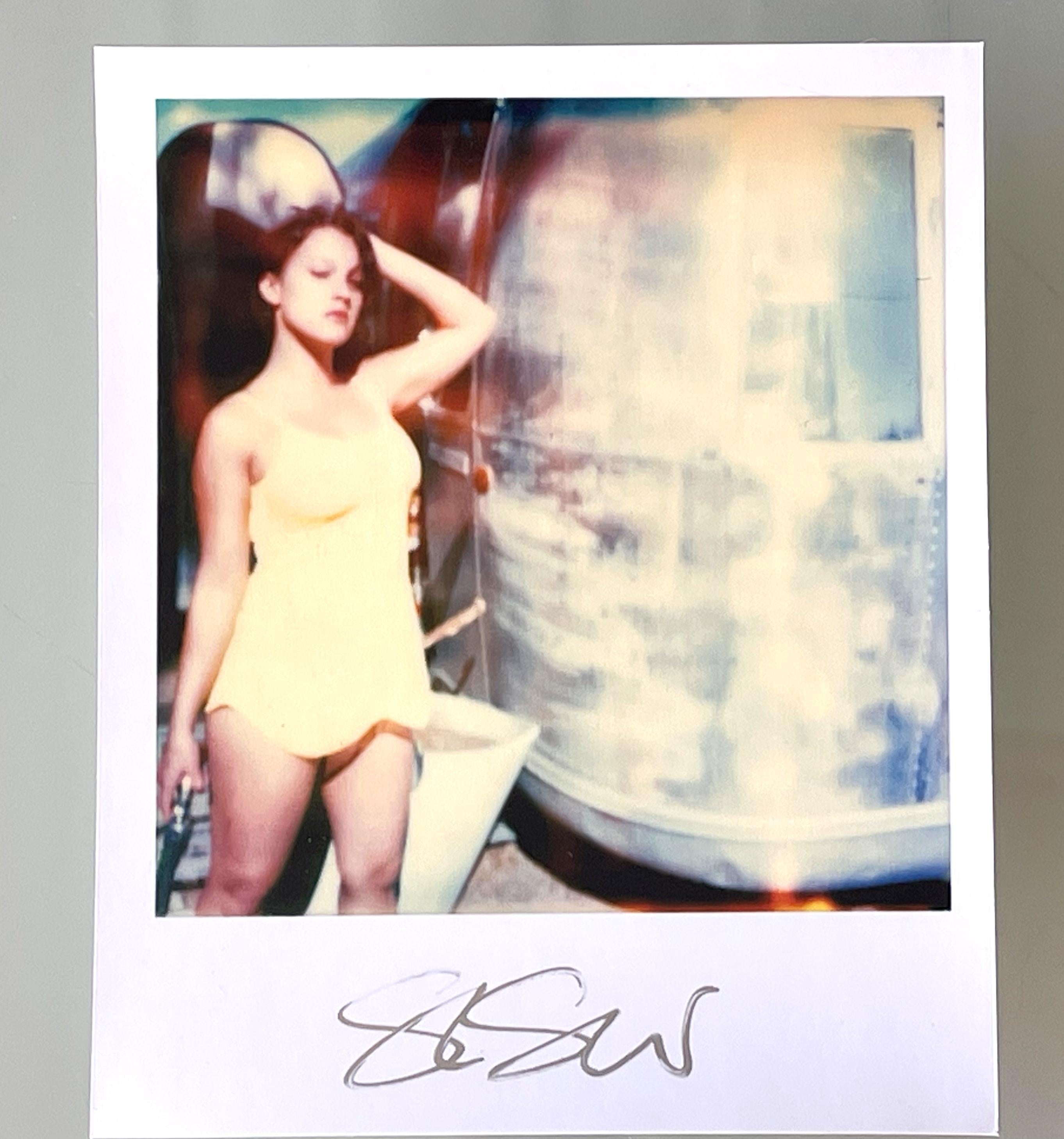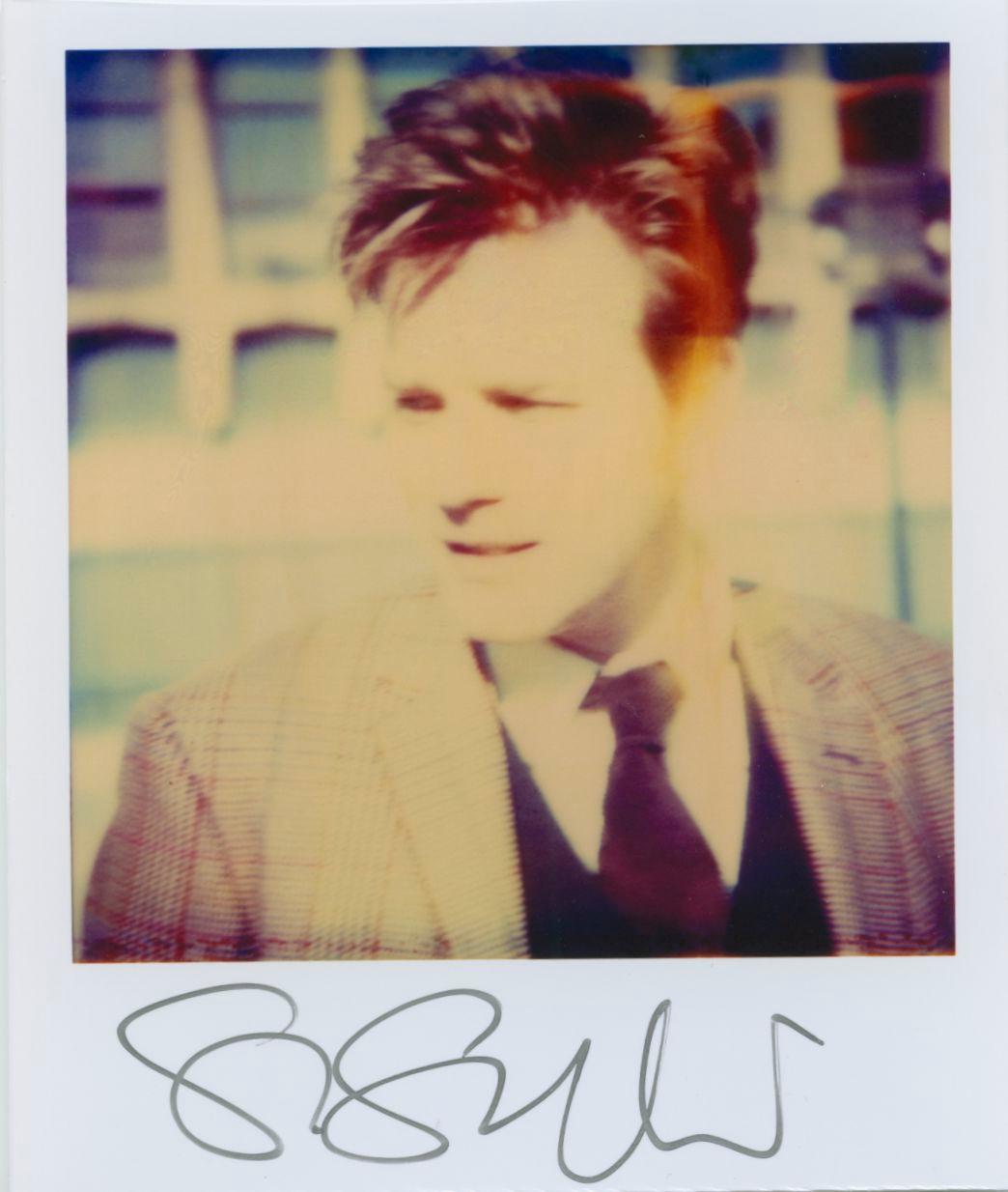Items Similar to Stefanie Schneider Polaroid sized unlimited Mini 'Gestures' - signed
Want more images or videos?
Request additional images or videos from the seller
1 of 2
Stefanie SchneiderStefanie Schneider Polaroid sized unlimited Mini 'Gestures' - signed1999
1999
About the Item
Stefanie Schneider Polaroid sized unlimited Mini 'Gestures' - 1999 -
signed in front, not mounted.
1 Digital Color Photographs based on a Polaroid.
Polaroid sized open Editions 1999-2016
10.7 x 8.8cm (Image 7.9x7.7cm) each.
Stefanie Schneider interviewed for the Instant Dreams Documentary
When did you first decide to work with Polaroids? Why do Polaroids seem to be so well tuned to our (artistic) senses, perception and minds?
I started using expired Polaroid film in 1996. It has the most beautiful quality and encapsulates my vision perfectly. The colors on one hand, but then the magic moment of witnessing the image appear. Time seems to stand still, and the act of watching the image develop can be shared with the people around you. It captures a moment, which becomes the past so instantly that the decay of time is even more apparent; – it gives the image a certain sentimentality. The Polaroid moment is an original every time.
Why use a medium from the past?
For me, analog has always been there in the present. For the new generation, analog is interesting because it's new to them. I understand that people growing up in a digital age will wonder about its usefulness, but it's theirs to recover if they want to. When I first started working with Polaroid, it wasn't the past. It was a partially forgotten medium, but it existed nonetheless. It is mine by choice. There is no substitute for tangible beauty.
Is it imperfect?
The imperfect perfection in a “wabi-sabi” kind of way.
Wabi-sabi (侘寂) represents a comprehensive Japanese world view or aesthetic centered on the acceptance of transience and imperfection. The aesthetic is sometimes described as one of beauty that is imperfect, impermanent, and incomplete.
'If an object or expression can bring about, within us, a sense of serene melancholy and a spiritual longing, then that object could be said to be wabi-sabi'. 'Wabi-sabi nurtures all that is authentic by acknowledging three simple realities: nothing lasts, nothing is finished, and nothing is perfect.'
Is the Polaroid photograph recognizable or even sometimes cliché?
Absolutely! There's something cliché about the way I'm showing the American Dream. I live it myself, trying to find perfection in an imperfect world. Reaching for the horizon. The dream is broken; the cliché tumbles. There are different ways to involve an audience. You could make movies like Harmony Korine's 'Gummo', a masterpiece in my view, which would estrange a large part of the audience. A certain film education is a prerequisite. Or you can start with clichés, the audience then feels safe, which lures them into the depth of your world without them even knowing it or understanding where exactly they are being led to. Appealing to emotions and the sub-conscious. Normal, Change, New Normal.
You continually revisit the landscape of the American West in your work. What draws you back to this scene?
Southern California represents a dream to me. The contrast of Northern Germany, where I grew up, to the endless sunshine of Los Angeles was what first attracted me. The American West is my dream of choice. Wide, open spaces give perspectives that articulate emotions and desires. Isolation feeds feelings of freedom or sometimes the pondering of your past. The High Desert of 29 Palms has very clear and vivid light, which is vital. Expired Polaroid film produces 'imperfections' that I would argue mirrors the decline of the American dream. These so called 'imperfections' illustrate the reality of that dream turning into a nightmare. The disintegration of Western society.
Are you playing with the temporality of the material and the value of the moment itself?
The value of the moment is paramount, for it is that moment that you're trying to transform. All material is temporary, it's relative, and time is forever.
Why does analog film feel more pure and intuitive?
It's tangible and bright and represents a single moment.
The digital moment may stay in the box (the hard drive / camera / computer etc.) forever, never to be touched, put into a photo album, sent in a letter, or hung on a wall. Printing makes it an accomplishment.
The analog world is more selective, creating images of our collective memory.
The digital worldwide clicking destroys this moment. The generation without memories due to information overload and hard drive failures. Photo albums are a thing of the past.
Why does it feel this way?
That's how the human instinct works.
When I was a child, every picture been taken was a special moment. Analog photographic film as well as Super-8 material were expensive treasures. My family's memories were created by choosing certain moments in time. There was an effort behind the picture. The roll of film might wait months inside the camera before it was all used. From there, the film required developing, which took more time, and finally, when the photos were picked up from the shop, the memories were visited again together as a family. Who knew then, how fleeting these times were. Shared memories was a ritual.
What's your philosophy behind the art of Polaroid pictures?
The 'obsolete' is anything but obsolete. Things are not always as they appear, and there are hidden messages. Our memories and our dreams are under-valued. It is there that real learning and understanding begins by opening yourself to different perspectives.
What inspired you to use stop motion cinematography?
My work has always resembled movie stills. I remember the first time I brought a box of Polaroids and slid them onto Susanne Vielmetter's desk (my first gallery). Instantly, it became apparent that there was a story to tell. The stories grew. It was undeniable to me, that the emerging story was where I was destined to go. I've made four short films before my latest feature film, 'The Girl behind the White Picket Fence.' This film is 60 minutes long with over 4000 edited Polaroids. It's important to remember that our sub-conscious fills in the blanks, the parts missing from the story allow a deeper and more personal experience for the viewer. That is, if you surrender yourself and trust me as the director to lead you somewhere you might not have been before.
Why do you think it is important to own art?
'We have art in order not to die of the truth'
Nietzsche
- Creator:Stefanie Schneider (1968, German)
- Creation Year:1999
- Dimensions:Height: 4.22 in (10.7 cm)Width: 3.47 in (8.8 cm)Depth: 0.04 in (1 mm)
- Medium:
- Movement & Style:
- Period:
- Condition:
- Gallery Location:Morongo Valley, CA
- Reference Number:1stDibs: LU652310039672
About the Seller
4.9
Platinum Seller
These expertly vetted sellers are 1stDibs' most experienced sellers and are rated highest by our customers.
Established in 1996
1stDibs seller since 2017
Typical response time: <1 hour
- ShippingRetrieving quote...Ships From: Morongo Valley, CA
- Return PolicyA return for this item may be initiated within 7 days of delivery.
Auctions on 1stDibs
Our timed auctions are an opportunity to bid on extraordinary design. We do not charge a Buyer's Premium and shipping is facilitated by 1stDibs and/or the seller. Plus, all auction purchases are covered by our comprehensive Buyer Protection. Learn More
More From This SellerView All
- 1 Stefanie Schneider's Mini 'Girl Nude' - signedBy Stefanie SchneiderLocated in Morongo Valley, CA1 Stefanie Schneider Mini 'Girl Nude' - 1999 - signed in front, not mounted. 1 Digital Color Photographs based on a Polaroid. Polaroid sized open Editions 1999-2016 10.7 x 8.8cm...Category
Early 2000s Contemporary Color Photography
MaterialsArchival Paper, C Print, Color, Lambda, Polaroid
- Stefanie Schneider Polaroid sized Minis - 'Margarita' - signed, looseBy Stefanie SchneiderLocated in Morongo Valley, CAStefanie Schneider's Mini Margarita (Till Death Do Us Part) - 2005 featuring Austin Tate signed in front, not mounted. Digital Color Photographs based on a Polaroid. Polaroid siz...Category
Early 2000s Contemporary Color Photography
MaterialsArchival Paper, C Print, Color, Lambda, Polaroid
- Stefanie Schneider Polaroid sized Minis - 'Her eyes...' - signed, looseBy Stefanie SchneiderLocated in Morongo Valley, CAStefanie Schneider's Mini Her Eyes, the Color of the Sky (Till Death Do Us Part) - 2005 featuring Daisy McCrackin signed in front, not mounted. Digital Color Photographs based on a...Category
Early 2000s Contemporary Color Photography
MaterialsArchival Paper, C Print, Color, Lambda, Polaroid
- Stefanie Schneider Polaroid sized Minis - 'Making out...' - signed, looseBy Stefanie SchneiderLocated in Morongo Valley, CAStefanie Schneider's Mini Making Out in Car (Till Death Do Us Part) - 2005 featuring Daisy McCrackin & Austin Tate signed in front, not mounted. Digital Color Photographs based on ...Category
Early 2000s Contemporary Color Photography
MaterialsArchival Paper, C Print, Color, Lambda, Polaroid
- Stefanie Schneider Polaroid sized Minis - 'Lady Bird' - signed, looseBy Stefanie SchneiderLocated in Morongo Valley, CAStefanie Schneider's Mini Lady Bird (Chicks and Chicks) - 2016 signed in front, not mounted. Archival Color Photographs based on the Polaroid. Polaroid sized open Editions 1999-2...Category
Early 2000s Contemporary Color Photography
MaterialsArchival Paper, C Print, Color, Lambda, Polaroid
- 1 Stefanie Schneider's Mini 'Male Nude' - signedBy Stefanie SchneiderLocated in Morongo Valley, CA1 Stefanie Schneider Mini 'Male Nude' - 1999 - signed in front, not mounted. 1 Digital Color Photographs based on a Polaroid. Polaroid sized open Editions 1999-2016 10.7 x 8.8cm...Category
Early 2000s Contemporary Color Photography
MaterialsC Print, Archival Paper, Polaroid, Lambda, Color
You May Also Like
- Tyler Shields - The Girl in The Red Car, Photography 2021, Printed AfterBy Tyler ShieldsLocated in Greenwich, CTSeries: Historical Fiction Chromogenic Print on Kodak Endura Luster Paper All available sizes and editions: 15" x 20" 22.5" x 30" 30" x 40" 45" x 60" 56" x 72" 63" x 84" Editions of ...Category
2010s Contemporary Color Photography
MaterialsLuster, Paper, Archival Ink, Archival Paper, Photographic Paper, C Print...
- Tyler Shields - Red Portrait, Photography 2018, Printed AfterBy Tyler ShieldsLocated in Greenwich, CTSeries: Paint Chromogenic Print on Kodak Endura Luster Paper All available sizes and editions: 18" x 18" 30" x 30" 45" x 45" 60" x 60" 70" x 70" Editions of 3 Tyler Shields is phot...Category
2010s Contemporary Color Photography
MaterialsLuster, Paper, Archival Ink, Archival Paper, C Print, Color
- Tyler Shields - The Girl with The Red Glove, Photography 2021, Printed AfterBy Tyler ShieldsLocated in Greenwich, CTSeries: Historical Fiction Chromogenic Print on Kodak Endura Luster Paper All available sizes and editions: 15" x 20" 22.5" x 30" 30" x 40" 45" x 60" 56" x 72" 63" x 84" Editions of ...Category
2010s Contemporary Color Photography
MaterialsDigital Pigment, Luster, Archival Pigment, Inkjet, Laser, Digital, Color...
- Tyler Shields - Zipper Mouth, Photography 2021, Printed AfterBy Tyler ShieldsLocated in Greenwich, CTSeries: Provocateur Chromogenic Print on Kodak Endura Luster Paper All available sizes and editions: 18" x 18" 30" x 30" 45" x 45" 60" x 60" 70" x 70" Editions of 3 + 2 Artist Proofs...Category
2010s Contemporary Color Photography
MaterialsLuster, Paper, Archival Ink, Archival Paper, C Print, Color
- Alice Topping by Slim AaronsBy Slim AaronsLocated in Brighton, GBFor a limited time only these Slim Aarons prints are available to purchase at 15% discount. Please contact the gallery for any queries. Please bear in mind that all prints are produ...Category
20th Century American Modern Portrait Photography
MaterialsPhotographic Paper, Color, Lambda, C Print
- Pulitzer Fashions by Slim AaronsBy Slim AaronsLocated in Brighton, GBFor a limited time only these Slim Aarons prints are available to purchase at 15% discount. Please contact the gallery for any queries. Please bear in mind that all prints are produ...Category
20th Century American Modern Portrait Photography
MaterialsPhotographic Paper, Color, Lambda, C Print
Recently Viewed
View AllMore Ways To Browse
Stefanie Schneider Palms
Stefanie Schneider Photo
Schneider Light
Stefanie Schneider If It Would
First Edition First Printing Signed
Stefanie Schneider Stay
Stefanie Schneider Signed
Stefanie Schneider Original
Led Light Sign
Mini Signed Art
Stefanie Schneider Original Polaroids
Stefanie Schneider Wonder
Light Sign Letter
Harmony Korine
Mini Photography
Mini Mirrors
Mini Watch
Mini Landscape
